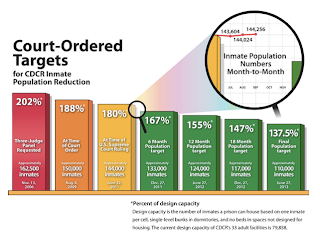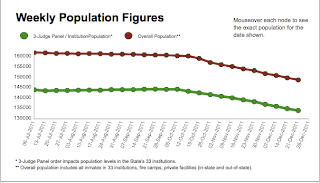(reposted from https://prisonerhungerstrikesolidarity.wordpress.com)
12,000 Prisoners Resume Hunger Strike in California
Outrageous Retaliation by Prison Officials
by Larry Everest and Bay Area Revolution Writers Group
A very just, very significant and courageous battle is rapidly spreading in California’s state prisons—and beyond. On September 26, prisoners at Pelican Bay State Prison in the Security Housing Unit (SHU) resumed their hunger strike—in the face of vicious lies and attacks and retaliation by the California Department of Corrections and Rehabilitation (CDCR) and other state officials, including Governor Jerry Brown. They had been on a hunger strike from July 1-July 20, demanding an end to the horrifically inhuman conditions they face. On September 29, the CDCR admitted that 4,252 inmates in eight state prisons had missed nine consecutive meals since Monday, September 26, and that state prisons at Calipatria, Centinela, Ironwood, Pelican Bay, San Quentin, and Salinas Valley, as well as the California Substance Abuse Treatment Facility and state prison at Corcoran, had all reported inmates on hunger strike. (The CDCR won’t count a prisoner as being on hunger strike until he or she has refused nine straight meals.)
These officials figures, it turns out, underestimated the number of prisoner hunger strikers. On October 1, Prisoner Hunger Strike Solidarity’s website reported, “Numbers released by the federal receiver’s office show that on September 28, nearly 12,000 prisoners were on hunger strike, including California prisoners who are housed in out-of-state prisons in Arizona, Mississippi, and Oklahoma.” (The website adds, “Representatives of the hunger strikers have previously stated that this will be a rolling strike, allowing prisoners to come off strike to regain strength. Because of this, numbers will likely fluctuate throughout the duration of the strike.”)
The strike has also reportedly spread to at least one county jail. The Inland Valley Daily Bulletin reported that 50 prisoners in the West Valley Detention Center in Rancho Cucamonga, east of Los Angeles, are refusing to eat in support of the hunger strike in the prisons. (September 27, 2011)
More than 6,500 prisoners joined the three-week hunger strike in July. Prisoners at Pelican Bay suspended the strike on July 20 after prison officials promised they would meet some of the prisoners’ demands and address the main issues prisoners were raising. Then in September, prisoners wrote a statement saying these promises had not been kept: “We remain in SHU indefinitely, deprived of our basic human rights—based on illegal policies and practices, that amount to torture; torture of us, as well as our family members and loved ones on the outside. CDCR remains in denial, and continues to propagate the lies re: ‘worst-of-the-worst’ 3000 gang generals, etc.—in order to dehumanize/demonize us, so as to maintain the status quo… CDCR’s intent is to break us down, and coerce us into becoming state informants! A violation of international treaty law, period! This is not acceptable!” (Go to revcom.us/s/pelicanbay-hungerstrike-en.html for extensive coverage of the July hunger strike.)
These prisoners are now putting their lives on the line again, demanding to be treated as human beings—demanding that the CDCR end the barbaric, inhumane conditions of imprisonment throughout California prisons, particularly in the “Security Housing Units” or SHUs. There, thousands of prisoners are locked in solitary confinement in windowless cells, 7.6 feet by 11.6 feet, for 22 hours or more a day for years, denied human contact. There are 1,111 inmates confined to the SHU at Pelican Bay alone, where the average length of confinement is 6.8 years. More than 500 prisoners have been in the Pelican Bay SHU for more than 10 years; 78 have been in the SHU for more than 20 years!
The prisoners’ demands include an end to group punishment, abolishing the CDCR’s gang status and “debriefing” policies, ending long-term solitary confinement, providing adequate food and expanding constructive programming and privileges. (See “Prisoners at Pelican Bay SHU Announce Hunger Strike, Revolution #237, June 26, 2011, for the prisoners’ five demands.)
Vicious Retaliation Against Hunger Strikers
Prison officials were deeply shaken by the breadth and strength of the July 1-20 hunger strike. This courageous action brought to light the horrific conditions of solitary confinement—amounting to torture—and there was broad support for the prisoners’ just demands.
After prisoners announced the strike would be resumed, prison authorities issued two memos to 165,000 prisoners—warning them against going on strike, claiming they were making changes. Disciplinary warnings were issued to thousands of hunger strikers. Supporters of the strikers report that a number of prisoners lost their jobs as punishment for supporting the strike in July, that some received punitive disciplinary write-ups, and some prisoner negotiators were being singled out and threatened with transfers and subjected to cell searches.
A September 29 press release from the CDCR said it “will not condone organized inmate disturbances” and warned: “Participation in mass hunger strikes and other disturbances will result in CDCR taking the following action: Participation in a mass disturbance is a violation of state law, and any participating inmates will receive disciplinary action in accordance with the California Code of Regulations; and Inmates identified as leading the disturbance will be subject to removal from the general population and be placed in an Administrative Segregation Unit.”
Matthew Cate, Secretary of CDCR, interviewed by Berkeley’s KPFA radio on September 27, threatened prisoners: “If they still want to be on a hunger strike then there will be some consequences to that, because you can’t shut down prison operations with no consequences.” Cate repeatedly described the hunger strike as a “mass disturbance” and compared it to a riot. Attempting to justify why the media are not allowed access to the prisoners on strike—who are risking their lives to demand an end to inhumane conditions—Cates said it was “the same reason that we don’t allow media to have access to Charles Manson.”
On July 29 the CDCR released a revision to its Medical Services Program Policy and Procedures regarding a mass organized hunger strike—including criteria for when the force-feeding of inmates will take place. This could mean the CDCR plans to force-feed prisoners to break the hunger strike. The American Civil Liberties Union has written that “force-feeding contravenes U.S. domestic and international law and is universally considered to be a form of cruel, inhuman and degrading treatment.” (Press Release: ACLU Calls For End To Inhumane Force-Feeding Of Guantánamo Prisoners, January 9, 2009)
In July, the CDCR repeatedly lied, saying the strike was organized by gangs. Governor Jerry Brown, who never said anything about the hunger strike in July, has now publicly attacked hunger strikers and given full backing to the CDCR’s policies and attacks on the prisoners, saying, “We have individuals who are dedicated to their gang membership who order people to be killed, who order crimes to be committed on the outside… My recommendation is to deal effectively with gangs in prisons.” (California Prison Officials Warn Inmates On Hunger Strike,” CBS San Francisco News, September 30, 2011)
Family members of prisoners participating in the hunger strike are having their visits cancelled. And the Prisoner Hunger Strike Coalition reports that Carol Strickman and Marilyn McMahon, both attorneys who have served on the hunger strike mediation team and have coordinated legal visits for prisoners in the SHU, have both been banned from prisoner visits by the CDCR. This is a further effort to isolate the prisoners and prevent the truth of their situation from being known outside prison walls. (“CDCR Bans Lawyers: TAKE ACTION NOW!” Prisoner Hunger Strike Solidarity, September 30, 2011)
Think about what the draconian actions of the CDCR reveal: Who is defending crimes against humanity? Who is lying and justifying criminal violence against human beings? What does all this show about the utter illegitimacy of the prison system—and brutal nature of mass incarceration in the USA? For prisoners subjected to the most isolating conditions, sitting in their cells and refusing to eat is labeled a “mass disturbance.” Their demands simply to be treated as human beings are met with lies and threats of even more violence against them. This is completely outrageous and intolerable!
Carol Strickman put it like this: “We’re saying they are torturing the prisoners and we want them to stop the torture. The prisoners are so concerned about it that they are going to stop eating. If the response is to increase the torture, then they are just proving who they are and what their values are. This is a human rights issue and they are proving that they don’t see the prisoners as human.”
There is an urgent need for those on the outside to expose and oppose all these attacks on the hunger strikers and their supporters.
Strickman also told Revolution that there are other ramifications if prison officials declare the hunger strike a “mass disturbance”: “They could do lockdowns. That would prevent family visits. That means everybody in the prison can’t have visits. That would be another example of group punishment, and abolishing group punishment is one of the prisoners’ demands. So what they would be doing in response to the prisoners’ demands is to crank up group punishment—the behavior that is being protested. It means people can’t go to the law library, people can’t get medical visits, can’t do classes and programming. In women’s facilities they can’t go do their laundry. You can’t go to canteen. There are a lot of things that flow from a lockdown. That is a serious threat.”








